How to Care for Day-Old Chicks
Are you wondering how to care for day-old chicks? I’ve had a lot of practice over the years and in the process, I’ve learned a lot about proper chick care! Whether you are hatching eggs in an incubator or ordering day-old chicks through the mail, the following instructions will help you care for your chicks.
Been there, done that? This post will help refresh your memory. Although this is geared toward chicks, the instructions are similar for day-old turkeys, ducks, and geese.
This post contains affiliate and referral links and advertising as a means to earn income. You won’t pay any extra but I may earn a small commission on qualifying purchases. As an Amazon affiliate, I may earn a commission on qualifying purchases. See my disclosures.
Basic Care for Baby Chicks:
- Keep brooder temps at 95 F for the first week, and decrease by 5 degrees each week until they are fully feathered
- Make sure there is room for chicks to get in and out of the warm area as needed
- Provide probiotics in their drinking water to establish healthy digestive systems
- Keep food and shallow water containers clean and filled
- Make sure there are no drafts or sunny spots to cause temperature changes in the brooder area
- Make sure rodents, pets, or well-meaning children can’t hurt chicks

Get Ready For Day Old Chicks
Before your chicks hatch or arrive at the post office, be sure to have their brooder area set up and tested for a couple of days. You don’t want to find out that your only heat lamp isn’t working when you get home with your babies. Water should be at room temperature so it won’t chill the chicks.
Keep Your Day Old Chicks Warm
If you are using a heat lamp, turn it on two or three days in advance so you can adjust the height to provide the proper temperature.
I have used a heat lamp and an Eco Glow brooder, and both worked well. I’ve also created my own Redneck Brooder System. It is safer than a heat lamp (less chance of causing a fire) and uses less energy. My homemade heating system has lasted much longer than any of the other solutions I’ve tried.
My homemade brooder is similar to the Brinsea EcoGlow Brooder for Chicks or Ducklings which mimics the warmth of a mother hen.
For more information on how to use a heat lamp or find an alternative, read How to Safely Heat Your Chick Brooder.
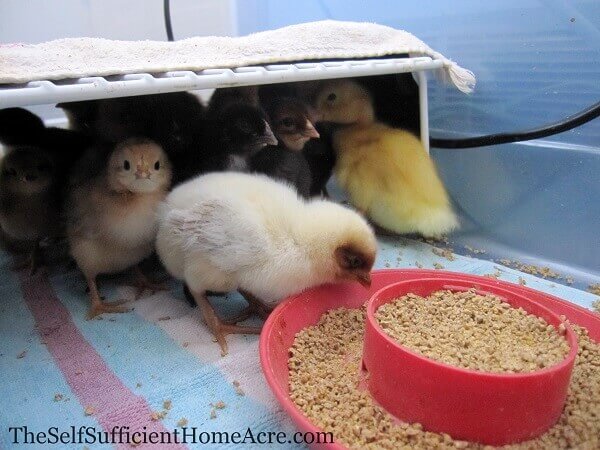
If my chicks are going straight to the barn when the temps are low, I use seedling heat mats and a heat lamp. The heat lamp warms up their room and the heat mats give them a warm comfy place to nap.
Update: I no longer use a heat lamp if I can help it. I have had several bulbs burn out after only a few hours, leaving my chicks cold, and one even shattered and sent glass shards flying.
Make sure there are no drafts in their brooding area.
If you only have a few peeps coming, consider keeping them in the house for a week or so to keep a close eye on them.

The Best Temperature for Baby Chicks
For the first week of their lives, chicks should be kept in a brooding area that is 95 degrees Fahrenheit, with space to get out of the heat if they get too warm.
- Week 1: 95 degrees Fahrenheit
- Week 2: 90 degrees Fahrenheit
- Week 3: 85 degrees Fahrenheit
- Week 4: 80 degrees Fahrenheit
- Week 5: 75 degrees Fahrenheit
- Week 6: 70 degrees Fahrenheit
Each week you will need to reduce the temperature of the brooder by 5 degrees F until the youngsters are feathered out.
If you notice the chicks piling on top of each other under the heat lamp, they are too cold. Lower the lamp, use a warmer bulb (an incandescent bulb may not be enough), or add another heat lamp to the brooder.
If the chicks are as far from the heat lamp as possible and they are panting, the temperature is too warm for them. Raise the heat lamp or switch to a lower-watt bulb.
Be sure the peeps have room to move around and find the best temperature for themselves.
Keep a digital thermometer under the heat lamp and check it several times a day. Be careful not to adjust the heat lamp and then get busy with something else. It doesn’t take long for extreme temperatures to kill baby poultry.
Food and Water for Chicks
Make sure your chicks have clean drinking water in a container that they can’t fall in and drown.
Dip their beaks in the water when you first unpack them from the shipping box to teach them how to drink. Normally the mother hen would teach them this, but you’ll need to fill in. Be careful to dip just the tip of their beak into the water.
If you hatched your chicks in an incubator, you may wait until the day after they hatch to teach them to drink. They may learn on their own!
- For the first day, give them water with probiotics only.
- Too much sugar or electrolytes can cause ‘pasty butt. ‘
- Don’t use honey in place of sugar, it can have a type of botulism that can kill baby animals.
- Provide chick starter crumbles for your little peeps and watch to see if they eat.
- If your chicks were vaccinated for coccidiosis, you should give them non-medicated feed.
- If they aren’t showing any interest in their food, try clipping up some tiny pieces of lettuce on top of the crumbles.
- For other types of baby poultry, check to see if starter crumbles contain enough protein.
- Provide chick grit to help aid their digestion. I use chick grit with probiotics.
Provide the Proper Bedding for Chicks
- Don’t use newspapers or anything slippery to line the bottom of your brooder.
- You may use paper towels, but I have switched to a textured vinyl shelf liner that is easy to clean. The texture gives a non-slip surface which prevents ‘spraddle leg’ in chicks.
- Once the chicks are moved to the barn, I use wood shavings for their bedding. They are easily raked away and replenished as the chicks soil them.
- When the peeps are a couple of weeks old I usually switch to hay or straw for their bedding and I’ve never had any problems. When they are really small they tend to trip over the straw.
What To Do If Your Chicks Are Sick
Sometimes when day-old chicks arrive they’ve had a rough trip.
- Make sure they are actively drinking and eating… teach them how!
- Add probiotics or apple cider vinegar to their drinking water (2 tablespoons of apple cider vinegar per quart) or give them plain unsweetened yogurt.
- After a day or two, give them electrolytes in their water. For an in-depth article, read How to Care for a Sick Chick.
- If you notice signs of pasty butt (droppings sticking to the vent), be sure to gently clean the feces off with a warm, damp cloth. Don’t rub too hard and make sure you aren’t irritating or removing any skin. Learn How to Treat Pasty Butt in Chicks.
- Sometimes there is nothing you can do to save the little ones who arrive sick. Occasionally you will have one or two dead chicks in your shipment.
- Be sure you know the hatchery’s replacement and refund policy before you order and let them know immediately if you receive dead or sick chicks.
- The longer your chicks spend in shipping, the more likely you will have some losses. Pay extra for express shipping if it is available.
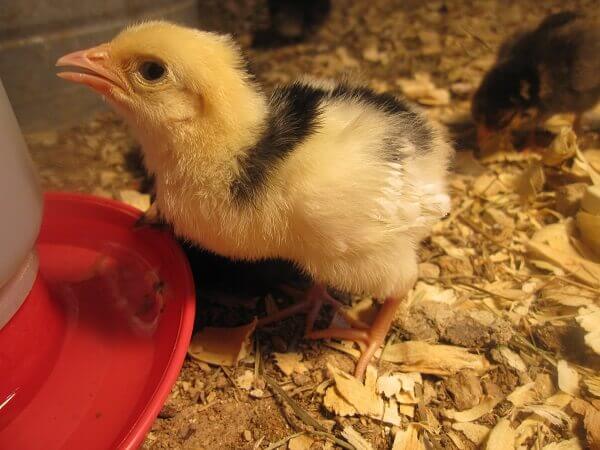
Pay Attention to Your Baby Chicks
Life is busy and we often get distracted with all of the chores necessary on our homestead. However, investing in a batch of baby poultry isn’t just about the financial cost. You also need to invest your time and attention.
Check on the chicks often. Make sure the temperature in the brooder doesn’t drop to dangerous levels if the weather turns or a bulb burns out.
Keep a screen over the brooder box to prevent escape. Don’t let the water run out and make sure their food is fresh and available. Read up on How to Save Money on Chick Starter Feed.
Little chicks create a big mess and you will need to clean their brooder on a regular basis. Be prepared to pay close attention to your peeps while they are young and vulnerable.
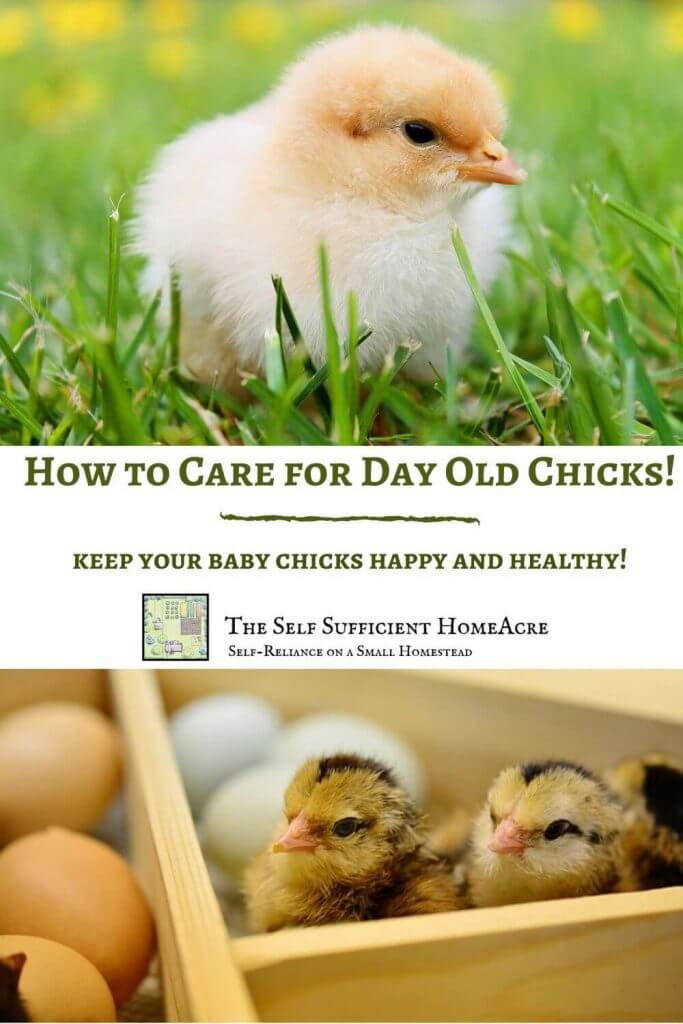

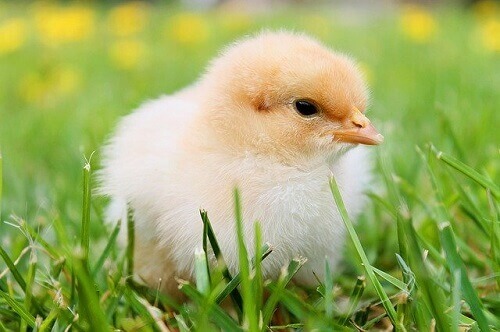
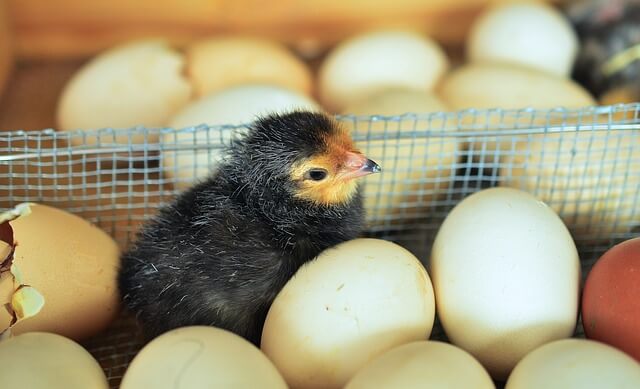
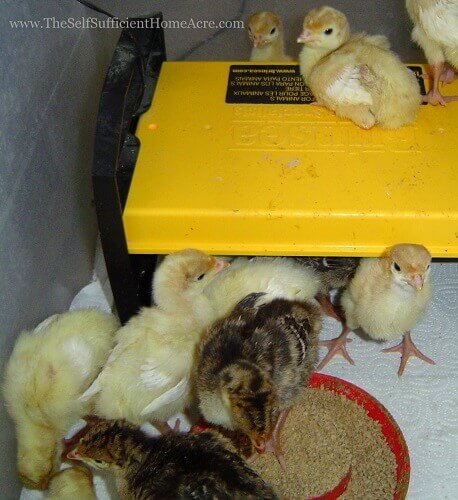


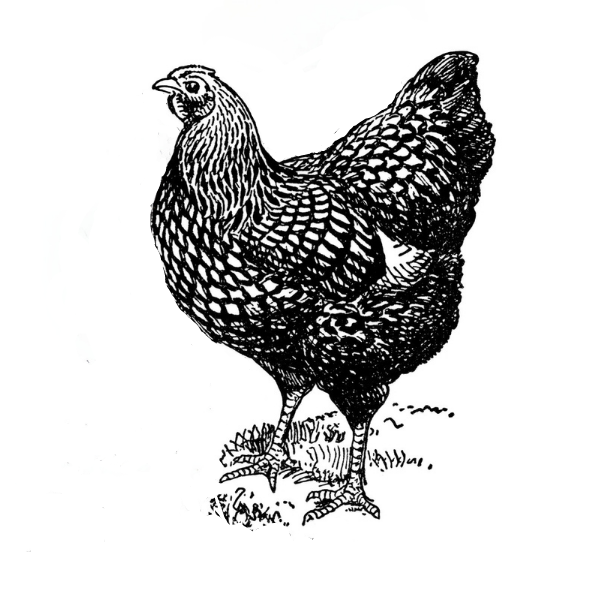

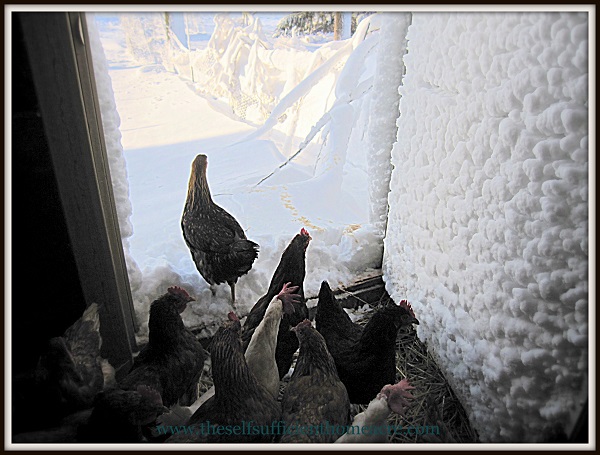

I’m interested to build up my good relationship with you and I want to information from about how to achieved or manager my own poultry farms here to achieved some thing on it
Hi Joseph,
Thank you for your interest. I share information on my website but please keep in mind that I keep a small flock of chickens for eggs and I have limited experience with large poultry operations. Best wishes… Lisa
Hello,
Is it immediately after being hatched that the broiler chicks are vaccinated for coccidiosis? Also after this coccidiosis vaccination would there be need for future vaccinations before they are ready for table?
Hi Faith,
Yes, the chicks are vaccinated their first day after hatching. They aren’t vaccinated again after that and you should not feed them medicated feed if they have been vaccinated for cocidiosis. I hope this helps… Lisa
Helpful
I’m glad it is helpful!
How can I treat mycroplasma on pullet which is more active please?
I would start by adding antibacterial herbs & spices to the drinking water. Oregano, fresh garlic, cinnamon, mint, and thyme all have antibacterial properties and are safe for chickens. Try adding about 1 tsp of each to a quart of water, shake and allow it to sit for a few hours, then give to your sick chicken. I hope this helps…Lisa
Thank you so much, what quantity in 5 liters of water
Hi Vuwesu,
I would use about 5 or 6 tablespoons of dried herbs in 5 liters of water. You may increase the amount if needed. I hope this helps.
Thanks it really help me in my project.
Hi Lissa Lynn, thanks for the enlightenment. Please am a new broiler farmer and this is my first time raising 51 birds, they will be 7days today, and I want to know the gumboro and lasota vaccination method and measurement to be taking and also the best time time to be giving to them.
Hi Emmanuel,
I don’t perform vaccinations on my poultry and I can’t give you any information about how to do this. Maybe this website will help…
Can I use a large blue plastic bin for the day old chicks? With the heat lamp above? Is not, what container do you recommend? 🙂
Hi Melanie,
Yes, you may use a plastic bin. Just be careful to keep the heat lamp high enough to prevent melting the plastic or starting a fire, and also to allow the chicks space to get out of the heat if it gets too warm. I hope this helps… Lisa
How can someone make sure broilers are not different in sizes
Hi,
It would be impossible to raise broilers to all be the same size at processing. Their genetics and health play a large part in determining how fast and how large they grow. One bird may get a parasite that others don’t or it may not be aggressive enough to compete for food. The best you can do is give them enough space, food, clean water, and protection from cold and rain and hope they all thrive. Best wishes.
Is there any treatment or drugs to been given to a day old Chicks? Am new here
I only give day-old chicks probiotics and electrolytes, as needed.
How old are the chicks classified as day lod.
When do we start counting their days for medication purposes.
Hi Felix,
It depends. If you order them from a mail-order hatchery, they must arrive by the end of the third day after hatch or they are likely to die. If you purchase them from a farm supply shop, you would need to ask what day they arrived from the hatchery, count backward to that day, and then add 1 to 3 days to account for the shipping. I hope this is helpful.
Is it safe to give them coconut water at the first day of their arrival. I’m new here and am asking based on an organic method.
Hi,
It shouldn’t cause a problem as long as the coconut water is fresh and is changed often to prevent bacterial growth. I know that it is full of potassium and other nutrients but I wonder if it has too much sugar for them as their first drink after shipping. I would give them plain water or water with a probiotic mixed in for their first drink and for the first few hours, then give them coconut water. I hope this helps… Lisa
What’s the cost of raising 100 a day old layers till the point of laying
Hi Ishola,
It depends on the cost of feed in your area and the amount wasted by the chicks and/or any rodents. In general, it takes about 16 to 20 pounds of feed per bird to raise them from day-old until 22 weeks of age… not including any wasted feed. I hope this helps.
GOOD ARTICLE.
I’m a new poultry farmer who has ordered 10 day old chicks. I’m in Ghana West Africa and in terms of the temperature, will the same thing apply? Thank you.
Yes, the same temperatures will apply no matter where you are raising chicks… however, you most likely use Celcius and will need to convert from the Fahrenheit temperatures listed. Thanks for reading!
Apple sider help chicks to do what and what types medicine do Sasso need
Hi Bridget,
Apple cider vinegar is touted as being good for chickens if you use the kind that has live bacteria. It is a probiotic that helps with gut health. Usually chickens and chicks don’t need other medications unless they are sick.
Best wishes
Thanks it really help me in my project and in my farm
I am a beginner and need your advice. I will be recieving my first batch of chicks this friday and have mixed feelings about this. Especially that it is winter
Hi Richard,
You will need to make sure the chicks are warm enough without overheating. The temperature should be at about 95 degrees Fahrenheit, with areas that they can cool off a little if needed. Best wishes
We got 10 chukar chiks with us, few days old. We’ve unfortunately lost 3 chicks now, and another one isn’t well. It’s panting and laying down but still laying near the heat source.
the heat lamps isn’t too hot either, seems pretty consistent from 90-95 degrees.
If I move him away from the heat source (think of overheating?) he goes back in that direction. The area they are in is large, and has the room to move if overheated. Not sure why they are gravitating towards it. the poor thing is a bit shacky and lethargic.
Any tips? It’s breaking my heart.
Hi Melanie,
I’m sorry to hear that your chick isn’t doing well. Is it drinking and eating? If not, I would try mixing water with a bit of plain yogurt and use an eyedropper to put a drop of water up to the tip of the beak. See if it will drink this to get hydrated and give it probiotics. I hope this helps.
GREAT POST !
I am a new poultry farmer and have researched as much as i can on poultry farming before i start. I have ordered for 50 day old broilers to start with. It was suggested that i give them glucovet D( Vitamin D Fortified Glucose) for five days after that i start giving them coccidiostat and antibiotic vitamins. can i get your opinion on this?
Hi Herbert,
Sorry, I just found your comment in my spam folder.
I have not used these specific supplements and medications. But when you are raising poultry on a commercial basis, the stakes are much higher and losing all or many of your chicks can be financially devastating. The supplements and medications you mention may be a reasonable measure to ensure good health and prevent an outbreak of disease. However, please read my take on each of these products…
Bbe sure that your new chicks get a drink of plain water first and then add the vit D fortified glucose OR an electrolyte solution. Administer according to directions and do not give more than directed. Too much sugar (glucose) can cause pasty butt in chicks.
The coccidiostat should only be given if the chicks were NOT vaccinated for coccidiosis. You can feed them a medicated feed OR add the medication to their drinking water.
I have not heard of ‘antibiotic vitamins’ so I am unsure what this source is referring to. There are antibiotics and there are vitamins. Perhaps there is a product available that contains both and may be added to their water. My feeling is that an antibiotic should not be used unless your chicks show signs of a particular illness that is treatable with antibiotics. If you are selling the meat, you will need to find out if using antibiotics is prohibited before using.
As far as vitamins, you would get those in a balanced broiler feed. They are also available in an electrolyte solution for poultry. If you give the electrolytes for poultry, do not give it along with the vit D fortified glucose because that would give them too much sugar. I would suggest the electrolytes instead of the vit D fortified glucose because it has more of the helpful vitamins in it.
I would also suggest giving them probiotics for the first week or so to help populate their guts with healthy bacteria so they are able to better digest and utilize the nutrition in the feed.
I hope this is helpful!
I want to learn how to give day old vecc!
Thank you so much…glad to be helpful!
Hi Shadrack,
Read as much as you can!
We have a new coop coming in 3 weeks and then baby chicks soon to follow. Thanks for the great advise on setting up the area for the babies. We planned on raising them in the enclosed portion of our coop – although I’d like to keep them in the house for a week before moving them outside.
I have a question about the yogurt, do you recommend giving it to all of the babies proactively or only if they have poop issues?
Appreciate your website and your reply!! Thanks!
Hi Christine,
So glad to be of help! It won’t hurt them if they all get the plain yogurt…and it may help their digestive systems. I often give all of the babies some yogurt as a treat with some of their food sprinkled on top.
Best wishes with the new flock!
Enjoy them!
Hi Patty,
One of the best ‘treats’ for this age is mashed up boiled eggs. Hard boil an egg, cool and remove the shell, then mash up really well. Feed like this or add a bit of plain yogurt for probiotics. The other really healthy treat for chickens of any age is plain yogurt! They can also eat finely chopped greens, such as spinach and kale when they are little.
As they get older, they will enjoy meal worms, cooked pumpkin or squash, lettuce and spinach, and free ranging for bugs.
Just be careful not to overdo the treats! They need a balanced diet to supply them with all of the nutrients they need to stay healthy.
I hope this helps!
Thank you, Toby!
Hi Amowe,
I did a search and found these websites with information.
https://www.drugs.com/vet/tetracycline-soluble-powder-324.html
https://articles.extension.org/pages/66981/antibiotics-approved-for-use-in-conventional-poultry-production
Basically, the websites say that you can use Tetracycline for turkeys, but the dosage is dependent on the weight of the bird, and the disease you are treating.
I can not advise you on this matter, I can only share the information that I have found. If it were me, I would try using natural antibiotics such as oregano, before trying Tetracycline.
I hope you are able to treat your baby turkey! I hope this helps…Lisa
This is the first time for us to have little chicks in our family . We have 9 little babies they are now 2 days old . I’ve read all your information and it’s great but one question, the hen that was laying on the eggs , should she be with the chicks or back out in the pen with the others ?
Hi Jaimie,
As long as the mother hen is taking good care of her chicks, I would leave her with them. She will keep them warm and teach them how to eat and drink. If she starts pecking at them or being mean, then put her with the rest of the flock and add a safe source of heat to the chicks’ enclosure. Some mamma hens are good at setting on a nest, but stink at motherhood…it just kind of depends on their personality.
Best wishes with the new brood!
Hi Erica,
Thank you for adopting the little chickies! I hope they are doing well. This is a tough question, because I always give my chicks the chick starter feed that has the nutrients that baby chicks need to develop properly. But here is what I would suggest…If you have access to eggs, feed them a mashed boiled egg once a day, and give them some cornmeal or finely ground grains…whatever you have available. Make sure that they always have clean water, and take them outside for a supervised foraging session each day. Find an area that has open sand or dirt so they can dust bathe and peck at the grit they need for digesting their food. If they can be allowed more and more time outside they will begin to catch insects and find more of their own food. If you have crab shells, fish leftovers, or other seafood, try crushing all of that up and letting them eat as much as the want.
I know that chickens survived for eons without humans feeding them, but some of them most certainly died of malnutrition. If you can give these little ones the things I’ve suggested, they should do pretty well. Thanks for writing, and BEST WISHES!
Thank you, Jane! Happy to share 🙂
I have never had the luxury of having a heat lamp. I have been off the grid and use batteries for lights. We kept our chicks in the house close to the wood stove. I put a regular 12 volt light bulb in the box or tank that I had the babies in and raised and lowered it for the needs of the chicks. I also put several thick towels over the box to help hold the heat in. If it was really cold, I would have put in hot water bottles and covered them with wood chips and changed it often. I was ready to do that, but I never had to.
The most I ever raised at one time was 24. When I had that many, I had a large stock tank in my living room. I don’t recall losing any, but as many years as I raised chicks, I am sure that I did. I am going to be looking into having chickens that raise their own. Don’t know if my “mommy” tenancies will let me keep out of their business, but I will try this year.
We have 3 phoenix hens plus many more standard hens. All three Phoenix went broody as soon as they started laying. They are sitting now and made me very aware of their dislike of my “mommy tendancies.” 🙂
Lol! I guess I’m not a very good mother hen…when the chicks are in the house I check on them more often, but one they are out in the barn I mostly check on the temps, feed and water maybe 3 or 4 times a day. I’d love to have a broody hen to raise a few clutches each year. So far I haven’t had much luck with that.
I guess I never thought of my heat lamp as a luxury, but if we build off grid, I guess it will be! A broody hen would be even nicer in that case.
Janolyn, you might want to look up Henderson’s Chicken Breed Chart online. It lists which breeds go broody more often. Best wishes!
Hi, thanks for sharing. Please at what age should peeps be given probiotics or vinegar and how often? Thank you.
Hi Kemi,
I give my chicks Sav-A-Chick probiotics on their first day, following the instructions. If I don’t have that probiotic on hand, I put 1 tablespoon of real apple cider vinegar (not vinegar with color added to look like apple cider vinegar) in one quart of water as a probiotic, starting on their first day. You can also give them a small spoonful of plain, unsweetened yogurt for the probiotics starting on the first day… sprinkle a little chick starter crumbles on top to draw their interest.
I don’t give them electrolytes until they have had at least one full day of drinking water with probiotics, to prevent the sugars from the electrolytes from causing runny stools and pasty butt. I hope this helps!
Hi Heather,
Do you withhold feed so that the sugar water has a chance to work it’s way through? Or another reason? I’m curious now!
Great info! We got our chicks 6 days ago now(from a local farm), and we are loving them! I read a LOT to make sure we were prepared for our chicks, and one thing that no one ever mentioned is that when they are about a day old they kind of sleep like they are dead. I mean…heads flopped over, legs stretched out, its hilarious – but at first it was scary. I really thought they were dying so I googled pics of chicks sleeping and yep…normal.
Hi Bekah,
Thanks 🙂 Enjoy those little ones! Yes, it’s pretty cute to see them sleeping. Wait until they are older and they take dust baths…when they get in a sunny, dusty spot, the often lay on their sides like they are dead!
Hi I ve 50 kuroiler chicks they are in one week is it bad for them to eat wood shaving that are in powder form????thanks a lot for the reply
Hi Maria,
They really shouldn’t be eating the wood shavings, powdered or not. It will not provide any nutrients but will fill them up. Make sure that they are getting enough food during the day and then remove their feed overnight to keep them from overeating. If they eat their bedding, they may not be getting enough feed. I hope this helps!
Hi I’m Maxwell and I’m busy with broilers raising them from day old until 7wks and first time I’m managed them and not even one dies until 4wks that 16 of them died then the second group they died first wk and second week and they were 13 chicks and on the 4th week only one died and I don’t know where I went wrong and now I have bought an incubator what vaccine am I supposed to give my chicks after hatchery and how coz I don’t want them to die in numbers any more please help me
Hi Maxwell,
I’m sorry to hear that. I don’t know what is going wrong with your chicks. It could be Mareks or coccidiosis, but you haven’t listed any symptoms so I am not sure.
I have never given my chicks vaccinations, although I do have vaccinations done by the hatchery. I would suggest giving them some plain yogurt and make sure they have clean water and the food is clean and fresh.
One of the tricks I learned when hatching is to put a feather duster and/or a rolled sock in the brooder when they first hatch. They will snuggle up in the feathers under the light. They seem more relaxed whenever I put the feather duster in the box. Once they are running about a day or two later, I pull it out. Plus the duster is pretty easy to clean and reuse for next batch of chicks.
Wow! Thanks for this, Lily! I’ve been wanting a feather duster for a while now (I live on a country, dirt road) but now I see that I need TWO … and this gives me reason to remember to get them! Obviously, chicks have a much higher priority to dusting!
I currently have 42 eggs in an incubator with hatch due in about 12 days (and just received my Brinsea EcoGlow 50 a week ago). I suspect most are fertile though probably not all because I have 13 hens and only 1 rooster – so we’ll see. Two of my hens are over 3 years old and only 1 still laying occasionally but my young rooster doesn’t seem to know that! They’re both scheduled for the freezer next time we have a good weather day for butchering. The other 11 are 7-month old Orpingtons that I bought last year from a hatchery. The rooster is a blue, feather-footed Maran … so, I’m calling the chicks currently growing in the incubator “Maringtons”. I also have 5 (2 pullets) Iowa Blue Chickens that are almost 4 months old. Two of the males will soon be moving to my sister-in-law’s yard and, once those girls are laying full-size eggs, I plan to incubate ALL of them as I hope to eventually have a large flock that will be true free-rangers with the only supplemental feeding coming from my heirloom gardening! They’re a dual purpose chicken that is much more alert to predators and the hens are great brooders and mothers so I look forward to them hatching and raising their own chicks!
Thanks so much for this article. I did learn some things from it as I’m fairly new to raising chicks. I always enjoy your posts!
Thanks! I’ve now got Geoff Lawton’s video ready to play! I’m anxious to hear his advice because, as I’ve mentioned before, my compost heap IS inside my chicken pen. One of the things my son enjoys doing most is picking up produce from the loading dock of the small local grocer where we live. Rather than throw it out, they put it on the loading dock to be picked up by anyone who wants to use it to feed their pigs, goats or other critters. We pick through it, throwing anything the chickens will eat into that compost pile and the rest goes to a friend who has pigs.
After I watch the video you recommended, I’m going to study on the nutritional needs of newly hatched chicks and see if I can find instructions on making rather than buying chick starter feed. I’d like to start and keep my new Marington’s as non-GMO as possible!!! I make yogurt and bone broth for my chickens and dogs already, often mixing them together, but the ignored most of the non-GMO feed that I bought. So, we’ll try it.
Thanks again!
Enjoy the video…I get a kick out of his series! I used to have a grocery store that did that, but the owner got ticked off and told them not to save it for me anymore. 🙁 Best wishes with your adventure! Let me know how it goes!
Hi Katie,
Yes…pasty butt is a very descriptive and rather gross term! Not a fun thing to deal with. 🙁
I can understand your desire to find pullets and I hope you find some! If you do decide to order chicks you might want to look up Sand Hill Preservation Center. The problem with buying pullets, from any source, is that they may have come from one of those hatcheries. I really hope that most hatcheries are more humane than the ones that sell layers to the egg industry.
Let me know how your search goes!